Greetings Dear Readers,
Please enjoy this video I made explaining some good acupressure points for dealing with frequent urination.
Yours in health,
Cynthia McGilvray, R.Ac.
Greetings Dear Readers,
Please enjoy this video I made explaining some good acupressure points for dealing with frequent urination.
Yours in health,
Cynthia McGilvray, R.Ac.
Greetings Dear Readers,
Please enjoy this video I made explaining five acupressure points that can be used to treat asthma.
Yours in health,
Cynthia
Greetings Dear Readers,
Please enjoy this video I made on treating insomnia with acupressure.
Sleep well!
Yours in health,
Cynthia
Greetings Dear Readers,
Please enjoy this video where I show you how to lower your heart rate using acupressure.
Yours in health,
Cynthia
Greetings Dear Readers,
Here are some great points for treating your knee pain using acupressure according to pain location. Enjoy!
Yours in health,
Cynthia
Greetings Dear Readers,
Please enjoy this video on how to treat bronchitis using acupressure.
Yours in health,
Cynthia
Greetings Dear Readers,
“Where there is Qi flow there is no pain”. – Chinese proverb
I thought I’d share some excellent exercises to balance the body by focusing on releasing the meridians one by one.
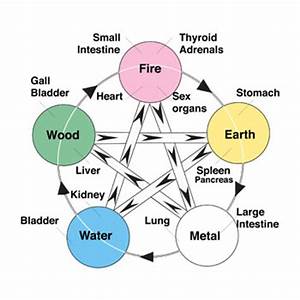 These stretches come from the Shiatsu tradition which is based on the five element system of medicine. If you already know which meridians (also known as channels) are out of balance you can focus more on those ones. For a general tune-up you can work through the whole sequence. For the entire sequence, the exercises are performed in the order on the flow of energy according to the Five Elements as they are linked below. You can incorporate these stretches into your daily or weekly routine for best results.
These stretches come from the Shiatsu tradition which is based on the five element system of medicine. If you already know which meridians (also known as channels) are out of balance you can focus more on those ones. For a general tune-up you can work through the whole sequence. For the entire sequence, the exercises are performed in the order on the flow of energy according to the Five Elements as they are linked below. You can incorporate these stretches into your daily or weekly routine for best results.
Please remember that the effect of these stretches, like acupuncture, is cumulative, meaning that each session builds upon the next so that the energy is building up in each organ system over time. It takes persistence but often one can start to feel the boost in energy after the first session. Intention is important. You can set an intention to increase the flow of energy in the body, to relax the channels, to strengthen the energy of the channels and organs, and the corresponding muscles, tendons and ligaments so that your energy is directed to flow in a smooth and unobstructed way for the relief of pain, to improve mobility and for general health.
Enjoy!
Yours in health,
Cynthia McGilvray, R.Ac.
Greetings Dear Readers,
Our immune system performs a complex range of tasks to overcome various types of foreign invaders and diseases. Several organs and processes are involved such as bone 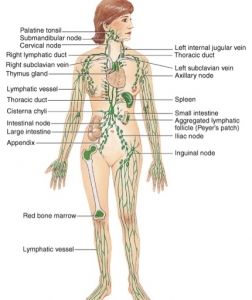 marrow, lymphocytes, the spleen, lymph nodes, and the thymus gland. White blood cells such as neutrophils, macrophages and dendritic cells identify what is not our body and destroy those cells. Eastern medicine focuses on building up the body’s internal defense system so that the microbe has no chance of getting a foothold.
marrow, lymphocytes, the spleen, lymph nodes, and the thymus gland. White blood cells such as neutrophils, macrophages and dendritic cells identify what is not our body and destroy those cells. Eastern medicine focuses on building up the body’s internal defense system so that the microbe has no chance of getting a foothold.
Strengthening the immune response involves building the Defensive Qi, an energetic layer of Yang (warm, invigorating) energy that lives between the skin and the muscles. Since Defensive energy depends on sufficient strength and warmth of the body, this explains why we need to keep our body warm in fall and winter and get enough rest to keep colds at bay. When the Defensive energy is strong we either don’t catch the cold or flu going around, or if we do catch it, our body has the strength to fight it off quickly. One recent study presented by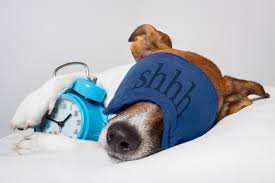 the Sleep Research Society concluded that those who sleep only 5-6 hours per night have a greater risk of catching a cold.
the Sleep Research Society concluded that those who sleep only 5-6 hours per night have a greater risk of catching a cold.
The lymph system acts as the body’s internal vacuum cleaner, cleaning up all the microbes and waste materials and flushing them out. Since the lymph system does not have a pump, it requires exercise or therapy such as massage, cupping, or skin brushing to move the lymph to promote proper drainage. For this reason, it is so important to get some type of regular exercise to avoid lymph stagnation which can weaken immunity.
Two Great Acupressure Points to Stimulate Your Immune System
Stomach 36 (Zu San Li). This is one of the most important points of the whole body because it strengthens the body in a multitude of ways, strengthening energy, blood, Yin and Yang. You just can’t go wrong

using this point:) You can find it by placing your hand under your knee cap, then directly under your hand at about one thumb’s distance lateral to the tibia (that big bone at the front of your leg) you will find a depression, or little dip along the skin and this depressed area is ST 36. Give this point some good pressure for several minutes, then do the other side.
Another great point is point is Large Intestine 11. You can find this point by bending your arm so that you see the elbow crease on the  skin at the lateral side of the elbow joint. The end of the elbow crease marks Large Intestine 11. Pressing around this area may reveal some tenderness. Give this area some good pressure regularly. It is a homeostatic point that regulates both an under-active immune system (frequents colds, flus, cancer) as well as an overactive immune system (allergies, auto-immune disorders).
skin at the lateral side of the elbow joint. The end of the elbow crease marks Large Intestine 11. Pressing around this area may reveal some tenderness. Give this area some good pressure regularly. It is a homeostatic point that regulates both an under-active immune system (frequents colds, flus, cancer) as well as an overactive immune system (allergies, auto-immune disorders).
Regular acupuncture treatments can also build up immunity using point combinations to strengthen your Defensive energy, your warming invigorating Yang energy, as well improving circulation of blood and lymph depending on what each individual requires. Each acupuncture treatment builds upon each other and for this reason I recommend a  series of 5 treatments for the fall and winter season, to encourage you to see for yourself the immune supporting benefits acupuncture can provide.
series of 5 treatments for the fall and winter season, to encourage you to see for yourself the immune supporting benefits acupuncture can provide.
There are also foods and herbs that can support the strengthening of the Yang/Defensive energy as well as improve blood circulation to support lymph drainage.
Foods that Strengthen Immunity:
Green leafy vegetables (kale, spinach, collards, broccoli, cabbage, parsley), mushrooms (shitake, reishi, chaga, oyster, etc.), raw honey, goji berries, fermented foods (such as kombucha, sauerkraut, kimchi, miso, tempeh, pickles, yogurt without sugar), coconuts and coconut oil, berries, chlorella, garlic, ginger, green tea.
Herbs that Strengthen Immunity
Licorice (avoid if blood pressure is high), tusli, honeysuckle, chrysanthemum, elderberry, black pepper, cinnamon, cloves, oregano, yarrow, tumeric, echinacea.
Wishing you health and happiness!
Cynthia
References:
Greetings Dear Readers,
We all know people in our family or circle of friends who suffer from Type II diabetes. It is one of the most common diseases of the modern world and yet in North America, few know about the healing benefits that acupuncture and Oriental medicine has been providing for sufferers in Asian countries for centuries. Acupuncturists have identified roughly 20 acupuncture points on the body that appear to assist with lowering blood sugar, as well as protocols

for dealing with diabetic neuropathy. One very commonly used point, ST 36 (find this point by finding a slight depression in the skin at 4 fingers below the knee can and one thumb lateral to the tibia bone). Yes, try some acupressure here!. It is considered to be the most important point on the body for its wide range of uses such as strengthening Yin which is considered the root of this disorder, as well as strengthening Qi (vital energy) and Yang, which assists with the complications of Type II diabetes. It is also interesting that some of these points have shown to have the side-benefit of lowering blood cholesterol which is also a important for reducing neuropathies.
Type II Diabetes is a metabolic disorder involving resistance to insulin, lack of insulin and high blood sugar. Left unchecked, Type II diabetes can lead to a number of secondary conditions such as degenerative eye disorders , cardiovascular disease, limb pain and numbness, skin ulceration and kidney failure. Maintaining a healthy diet, exercise and medication or herbs to control blood sugar are very important and acupuncture is not a substitute for these. Regular check-ups with your doctor are also important.
, cardiovascular disease, limb pain and numbness, skin ulceration and kidney failure. Maintaining a healthy diet, exercise and medication or herbs to control blood sugar are very important and acupuncture is not a substitute for these. Regular check-ups with your doctor are also important.
A number of studies on acupuncture treatment for Type II diabetes have shown significant benefit over the control group. Acupuncture can lower blood sugar during the treatment session, reduce stress (elevated stress is known to raise cortisol levels which leads to weight gain around the  abdomen). When there is excess insulin in the blood, the insulin creates inflammation in the body, otherwise known as Heat in TCM, affecting either the Upper Burner (Jiao) causing excessive thirst (polydipsea), the Middle Burner causing the urge to eat too much (polyphagia) or the Lower Burner causing too much urination (polyuria). This Heat clearing ability of acupuncture has been demonstrated scientifically in the before and after
abdomen). When there is excess insulin in the blood, the insulin creates inflammation in the body, otherwise known as Heat in TCM, affecting either the Upper Burner (Jiao) causing excessive thirst (polydipsea), the Middle Burner causing the urge to eat too much (polyphagia) or the Lower Burner causing too much urination (polyuria). This Heat clearing ability of acupuncture has been demonstrated scientifically in the before and after

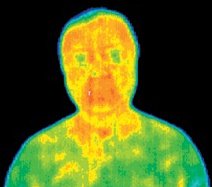
photos shown here.
Acupuncture has been recommended by the Mayo Clinic as a good alternative treatment for diabetic neuralgia (numbness, tingling and pain in limbs, poor balance, etc.). Pain conditions are something I treat daily in my clinic and one of the main reasons why acupuncture works so well for pain is because it increases the flow of energy and blood in the body . This relates to an ancient axiom in Chinese Medicine: “Where there is pain, there is blockage of Qi (energy); Where there is no pain, there is no Qi blockage”.
Although some doctors have advised diabetic patients to avoid acupuncture because of risk of infection, in fact the standards of acupuncture practice i n North America are very high and requires practitioners to only used pre-packaged, sterile, single-use disposable
n North America are very high and requires practitioners to only used pre-packaged, sterile, single-use disposable
There is an abundance of research studies showing many of the positive effects of acupuncture for Type II Diabetes, more than what I have room to talk about here so I believe it is well worth looking into as a natural way to support the body.
A few other helpful things to consider for Type II Diabetes self-care are:

3. Cinnamon also regulates blood glucose. Caution if you have night sweats or a feeling of heat at night, please don’t take cinnamon, it’s too heating in this case.
Yours in health,
Cynthia
References:
Greetings Dear Readers,
If you or someone you know is living with Lupus there is hope. Oriental medicine has had a lot of success with many types of auto-immune diseases such as Lupus.
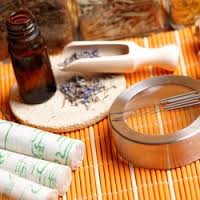 Systemic Lupus Erythmatosus (SLE) is an auto-immune disorder in which the immune system attacks its’ own tissues leading to chronic inflammation. Several or
Systemic Lupus Erythmatosus (SLE) is an auto-immune disorder in which the immune system attacks its’ own tissues leading to chronic inflammation. Several or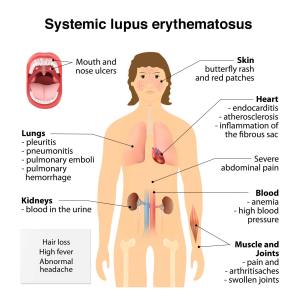 gan systems may be affected such as kidneys, heart, skin, blood cells, joints, brain and skin. Western medicine explains the cause of lupus as essentially unknown but beyond that is believed to be a combination of genetics and environment where some people have a genetic predisposition to developing lupus and then various environmental factors such as sunlight, medications (anti-biotics, anti-seizure meds, blood pressure medications) can be the triggers that set off the lupus symptoms. Commonly used Western drugs such as NSAIDs (non-steroidal anti-inflammatory drugs), corticosteroids, anti-malarial drugs and immuno-suppressants are used to manage symptoms. Although these drugs may be able to control flare-ups to some extent, there are often side-effects with long-term use.
gan systems may be affected such as kidneys, heart, skin, blood cells, joints, brain and skin. Western medicine explains the cause of lupus as essentially unknown but beyond that is believed to be a combination of genetics and environment where some people have a genetic predisposition to developing lupus and then various environmental factors such as sunlight, medications (anti-biotics, anti-seizure meds, blood pressure medications) can be the triggers that set off the lupus symptoms. Commonly used Western drugs such as NSAIDs (non-steroidal anti-inflammatory drugs), corticosteroids, anti-malarial drugs and immuno-suppressants are used to manage symptoms. Although these drugs may be able to control flare-ups to some extent, there are often side-effects with long-term use.
Natural therapies such as acupuncture that can achieve suppression of flare-ups as well as get to the root of the disease itself.
Oriental medicine describes Lupus as a situation of too much Yang (heat) and not enough Yin (yin=coolness, moisture) which also creates “Empty Heat” or Heat resulting from Deficient Yin. I will publish a post about Yin Deficiency soon.
With Excess Heat, often the person has Heat signs such as the red butterfly rash on their face (red=heat)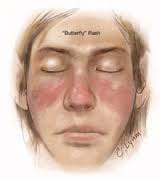 , constipation, excess thirst, a feeling of heat in the body or fever, and dark-coloured urine that may be scanty. The tongue is often red with a yellow coat, and the pulse is often rapid, and full. Heat symptoms tend to show up in the upper part of the body such as the face because heat rises. Lupus also shows up more often in younger people between the ages of 15 – 40 because young people are relatively more Yang than older people.
, constipation, excess thirst, a feeling of heat in the body or fever, and dark-coloured urine that may be scanty. The tongue is often red with a yellow coat, and the pulse is often rapid, and full. Heat symptoms tend to show up in the upper part of the body such as the face because heat rises. Lupus also shows up more often in younger people between the ages of 15 – 40 because young people are relatively more Yang than older people.
When the Heat is intense it becomes Fire. Fire rises upwards towards the heart and brain which can result in mental-emotional symptoms such as irritability or anxiety. Fire also dries up the body fluids which is why there can be constipation and scanty urine.
With Yin Deficiency, there is a lack of the moistening, cooling body fluids in the body which result in dryness as well as Blood Deficiency symptoms such as fatigue, insomnia and hair loss.. With prolonged Yin Deficiency there can be “Empty Heat” which means a relat ive increase in Heat caused by a lack of Yin which shows up as low-grade fever and night sweats. Yin involves all the body fluids including blood and sinovial fluids. A Yin deficient tongue may be peeled (geographic, or cracked) and the pulse may be superficial, thin and fast. Since women are considered more Yin, and require a greater amount of blood and body fluids for healthy body functions (think of how women’s bodies must replace menstrual blood lost each month) , this helps explain why SLE tends to affect women more than men.
ive increase in Heat caused by a lack of Yin which shows up as low-grade fever and night sweats. Yin involves all the body fluids including blood and sinovial fluids. A Yin deficient tongue may be peeled (geographic, or cracked) and the pulse may be superficial, thin and fast. Since women are considered more Yin, and require a greater amount of blood and body fluids for healthy body functions (think of how women’s bodies must replace menstrual blood lost each month) , this helps explain why SLE tends to affect women more than men.
Photophobia often stems from Yin deficiency of the Liver system (the Liver 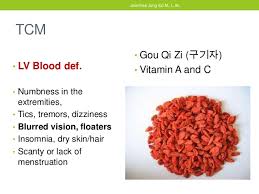 “opens” to the eyes) causing a lack of moistening fluids (Liver Blood) to the eyes resulting in light sensitivity and dry eyes. Hair loss is also indicated because in TCM hair is considered a surplus of Liver Blood. Discoid (small round) rashes are another symptom of Blood Deficiency as it is the function of Blood to moisten the skin so the lack of Blood causes red flaky rashes.
“opens” to the eyes) causing a lack of moistening fluids (Liver Blood) to the eyes resulting in light sensitivity and dry eyes. Hair loss is also indicated because in TCM hair is considered a surplus of Liver Blood. Discoid (small round) rashes are another symptom of Blood Deficiency as it is the function of Blood to moisten the skin so the lack of Blood causes red flaky rashes.
The joint pain in lupus may be the result of the lack of body fluids (Yin) resulting in less sinovial fluids in the joints. It can also be from Liver Blood Deficiency as the Liver Blood’s role is to moisten the tendons and resulting in arthritic pain.
Without treatment Lupus can progress into kidney damage and failure. This can be a life-threatening illness so it’s important to chose your treatment strategy wisely. Where there are more severe and acute symptoms such as breathing difficulty and acute kidney issues it’s important to see a Western doctor quickly to prevent serious complications. Once things have stabilized, TCM acupuncture can focus on the other symptoms as well as addressing the root of the disorder.
 The goals of acupuncture treatment with Lupus will depend on how the individual presents. In general, points will be used to clear the Heat/Fire and strengthen Yin and Blood of the affected channels and organ systems. This is achieved by selecting the correct acupuncture points that will do those jobs. Each acupuncture point has its own functions and indications so the treatment will be tailored to the patient’s unique presentation. The treatment for Lupus tends to be longer than other conditions because Yin Deficiency takes a long time to develop and so a longer time to remove. With persistent treatment as well as the guidance I offer in self-care including diet there should be a lessening of flare-ups as well as better energy and quality of life.
The goals of acupuncture treatment with Lupus will depend on how the individual presents. In general, points will be used to clear the Heat/Fire and strengthen Yin and Blood of the affected channels and organ systems. This is achieved by selecting the correct acupuncture points that will do those jobs. Each acupuncture point has its own functions and indications so the treatment will be tailored to the patient’s unique presentation. The treatment for Lupus tends to be longer than other conditions because Yin Deficiency takes a long time to develop and so a longer time to remove. With persistent treatment as well as the guidance I offer in self-care including diet there should be a lessening of flare-ups as well as better energy and quality of life.
Yours in health,
Cynthia McGilvray, R.Ac.
References:
1.Weil, Andrew, M.D., (August 2016). Lupus. Retrieved from: http://www.drweil.com/health-wellness/body-mind-spirit/autoimmune-disorders/lupus/
2. Mayo Clinic Staff, (November 2014). Lupus. Retrieved from: http://www.mayoclinic.org/diseases-conditions/lupus/basics/definition/con-20019676
3. Maciocia, Giovanni. ( 2005). The Foundations of Chinese Medicine. 2nd Ed. Churchill & Livingstone.